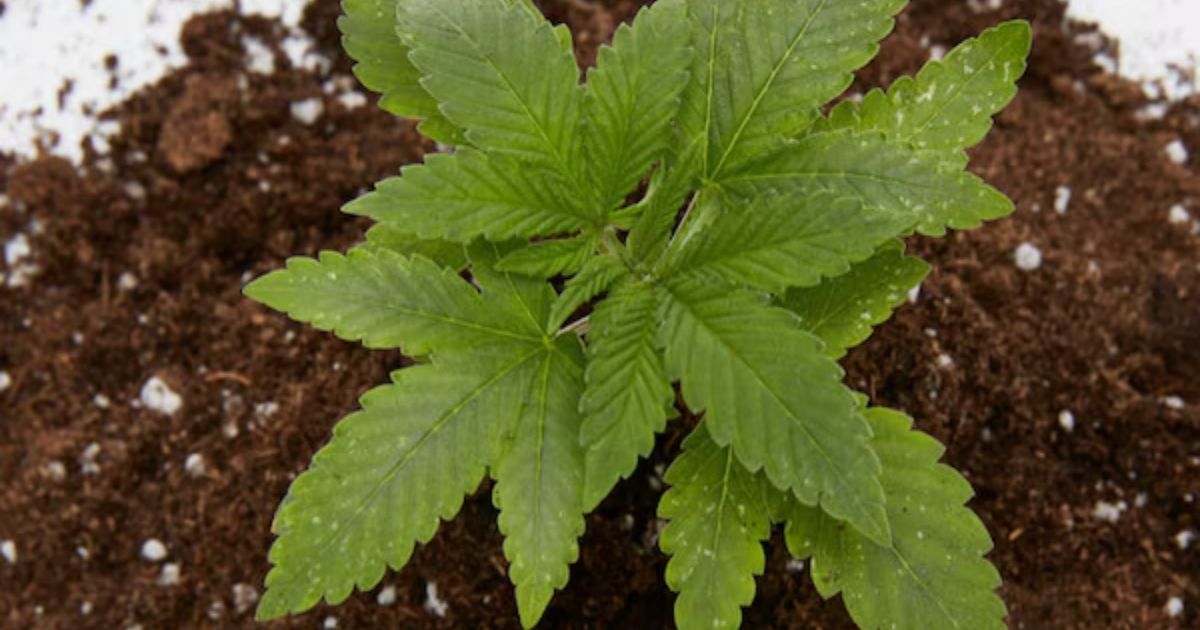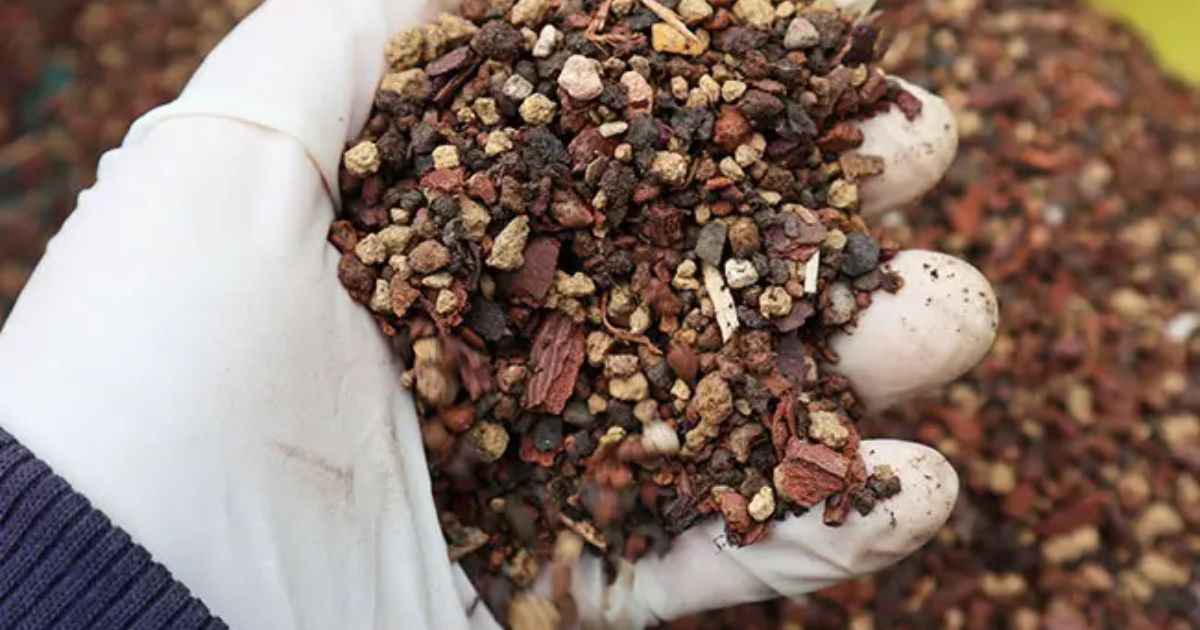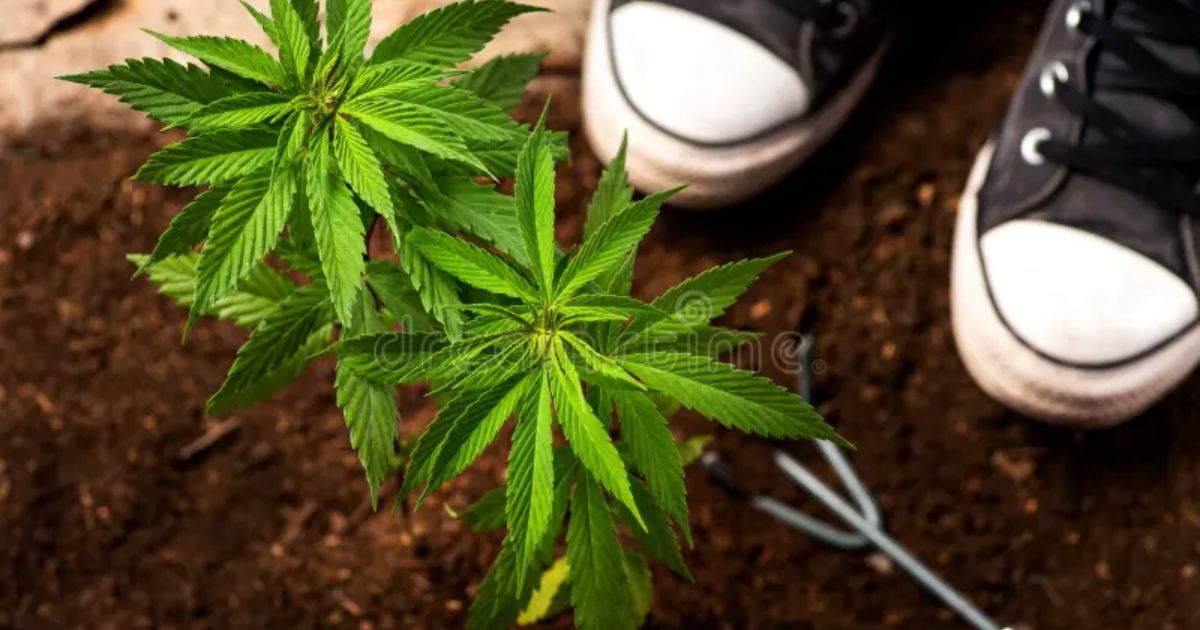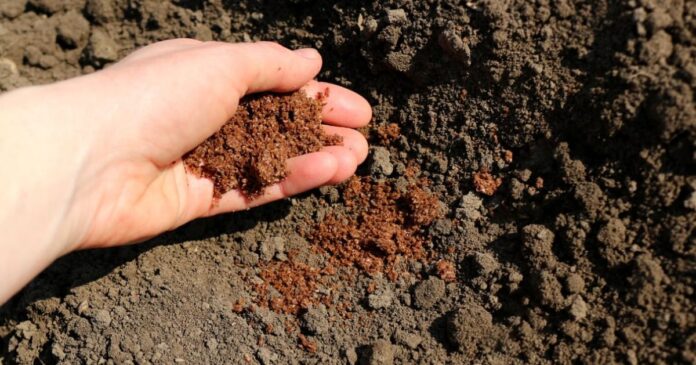Growing cannabis outdoors can be incredibly rewarding, but the foundation of a healthy, high-yielding plant starts with something that’s often overlooked: the soil. good soil for outdoor weed does more than hold your plants in place; it provides essential nutrients, regulates water, and supports strong root development, all of which directly impact your buds’ size and quality.
Choosing the right soil for outdoor weed growth can be a bit tricky, especially with so many options available. From natural garden soil to specially formulated organic mixes, each type has its advantages and limitations. Understanding what makes soil ideal for cannabis will not only support the growth of your plants but also help you save time and work throughout the growing season.
In this guide, we’ll break down the key factors to look for loamy soil, how to test and improve it, and the common mistakes to avoid so you can give your outdoor cannabis plants the best start possible.
Understanding Soil Basics for Cannabis
Before diving into specific best soil and fertilizer for indoor weed plants types or amendments, it’s essential to understand the fundamentals of what makes soil suitable for outdoor cannabis growth. Soil is more than just dirt; it’s a living ecosystem that provides plants with nutrients, water, air, and support for roots.
Nutrients Are Key
For growth, cannabis plants need a range of nutrients. Strong and produce high-quality buds. The primary macronutrients are:
Nitrogen (N): Supports leaf and stem growth, 5 Benefits of Black Gold Organic Potting Mix for Plants especially during the vegetative stage.
Root growth and flower output depend on phosphorus (P).
Potassium (K): Aids in bud formation, disease resistance, and general plant health.
Additionally, cannabis benefits from trace elements, such as iron, and secondary nutrients, such as calcium, magnesium, and zinc. Manganese. Good soil will naturally contain these, or be easily amendable to supplementation.
pH Balance Matters

The soil’s pH level determines how easily plants can absorb nutrients. For outdoor cannabis, the ideal pH range is 6.0–7.0. Overly acidic or alkaline soil can trap nutrients. , leading to deficiencies even in nutrient-rich soil. Testing soil pH is a simple step that can prevent major growth problems.
Soil Texture and Structure
Cannabis thrives in soil that is:
- Loamy: A balanced mix of sand, silt, and clay, which provides good drainage, nutrient retention, and aeration.
- Well-draining: Roots need oxygen; waterlogged soil can lead to root rot.
- Airy and light: Compacted soil limits root growth and nutrient uptake.
Understanding these basic soil properties will help you make informed choices when selecting or amending your soil, ensuring your outdoor cannabis plants have the foundation they need to flourish.
Key Features of Good Soil for Outdoor Weed
Choosing the right soil is critical for healthy cannabis growth, but what exactly makes soil “good” for outdoor weed? Here are the essential features to look for:
Nutrient-Rich Organic Matter
An abundance of organic matter in good soil provides cannabis with the vital nutrients it needs to grow. Seek out soil that has trace minerals like magnesium and naturally occurring levels of potassium, phosphorus, How to Get Rid of Budworms Naturally and nitrogen. Calcium and iron. Organic matter also feeds beneficial microbes that improve soil health over time.
Proper Drainage
Cannabis roots need oxygen to grow, and waterlogged soil can suffocate them, leading to root rot and other problems. Good outdoor soil should drain excess water efficiently while still retaining enough moisture to nourish your plants. Sandy loam is often ideal because it balances drainage and water retention.
Light and Airy Structure
Soil should be loose and fluffy, not compacted. A light texture allows roots to expand freely, encourages air circulation, and improves nutrient absorption. Avoid heavy clay soils unless you amend them with Compost or perlite to improve aeration.
Presence of Beneficial Microbes
There are helpful bacteria and fungi in healthy soil. This facilitates the breakdown of nutrients for simple absorption. These microbes also protect plants from pathogens and support strong root development. Organic or compost-rich soils naturally contain these helpful organisms.
Balanced pH Level
Even the most nutrient-rich soil can fail if the pH is off. Outdoor cannabis prefers slightly acidic to neutral soil with a pH of 6.0 to 7.0. A balanced pH ensures nutrients are available for uptake and reduces the risk of deficiencies.
Adaptability for Amendments
Good soil should be flexible, allowing you to easily add amendments such as Compost, worm castings, or natural fertilizers to boost growth. Avoid soils that are overly compacted or heavily chemically treated, as they may resist improvement.
Types of Soil Suitable for Outdoor Cannabis
Selecting the correct soil type is crucial for outdoor cannabis growth. Different soils have unique characteristics, How to Grow Bud Outdoors and understanding them can help you choose the best foundation for your plants. Here are the most suitable soil types:
Loamy Soil
- Why it’s ideal: Loamy soil is a well-balanced mixture of clay, silt, and sand, making it rich in nutrients while offering excellent drainage and aeration.
- Benefits: Retains moisture without becoming waterlogged, supports strong root growth, and is easy to amend with organic matter.
- Best for: Most outdoor cannabis growers looking for a low-maintenance, high-performing soil.
Sandy Soil

- Why it works: Sandy soil drains very quickly, preventing waterlogging and root rot.
- Challenges: It doesn’t hold nutrients well, so regular fertilization or Compost is needed.
- Best for: Hot climates or areas with heavy rainfall, as it prevents roots from sitting in water.
Clay Soil
- Why it works: Clay soil is rich in nutrients and holds water well, making it naturally fertile.
- Challenges: Can become compacted, reducing aeration and slowing root growth. It often needs amendments such as Compost, perlite, or coco coir to improve texture.
- Best for: Growers willing to invest a bit of work to improve soil structure.
Composted or Organic Soil Mixes
- Why it works: Pre-mixed organic soils often contain Compost, worm castings, and other natural fertilizers that boost nutrient content and support beneficial microbes.
- Benefits: Reduces the need for additional amendments and provides a healthy, living soil ecosystem.
- Best for: Beginners or anyone wanting a ready-to-use, Best Soil Mixture for Cannabis nutrient-rich medium for outdoor cannabis.
Raised Beds or Custom Mixes
- Why it works: Using raised beds or creating a custom soil mix lets you control texture, nutrients, and drainage perfectly.
- Tips: Mix loam, Compost, perlite, and organic fertilizers for a balanced, cannabis-friendly soil.
How to Test Soil Quality at Home
Before planting your outdoor cannabis, it’s essential to test your soil to ensure it can support healthy growth. Luckily, you don’t need fancy lab equipment; simple at-home tests can give you a clear picture of your soil’s quality.
The Squeeze Test
- Purpose: Checks soil texture and moisture retention.
- How to do it: Take a handful of soil and squeeze it in your hand.
- If it crumbles readily and forms a loose ball, it has good texture and drainage.
- If it forms a hard, compacted ball, your soil may be too clay-heavy.
- If it falls apart immediately, it’s likely too sandy and may need organic matter to retain nutrients.
Drainage Test
- Purpose: Ensures roots won’t sit in water.
- How to do it: Dig a small hole, pour water into it, and see how fast it drains.
- Water should drain within 30 minutes to an hour.
- Slow drainage can mean your soil needs sand, perlite, or raised beds to improve aeration.
pH Testing
- Purpose: Determines if nutrients are available for uptake.
- How to do it: Use a soil pH kit or digital tester.
- Ideal range for cannabis: 6.0–7.0.
- If pH is too low (acidic), add lime.
- If pH is too high (alkaline), add sulfur or peat moss.
Nutrient Testing
- Purpose: Checks for the presence of essential nutrients like nitrogen, phosphorus, and potassium.
- How to do it:
- Use a simple at-home soil test kit or send a sample to a local lab.
- If nutrients are low, amend the soil with Compost, The Guideline Of Organic Nutrients For Cannabis Plants worm castings, or natural fertilizers.
Observing Soil Life
- Purpose: Healthy soil contains beneficial microbes and organisms.
- How to do it: Dig a small section and check for worms or visible microbial activity.
- The presence of worms indicates fertile, well-aerated soil.
- Soil lacking life may benefit from Compost, organic matter, or microbial inoculants.
Enhancing Outdoor Soil Naturally
Even if your outdoor soil is decent, adding natural amendments can dramatically boost cannabis growth, yield, and overall plant health. Here are some practical ways to enhance soil naturally:
Add Compost
- Why: Compost enriches soil with organic matter, nutrients, and beneficial microbes.
- How: Mix 2–4 inches of well-rotted Compost into the top 6–8 inches of soil. This improves fertility, water retention, and texture.
Use Worm Castings
- Why: Worm castings are a nutrient powerhouse and support soil microbial life.
- How: Blend a few handfuls into the soil or sprinkle around the base of plants as a natural fertilizer.
Incorporate Perlite or Vermiculite
- Why: These natural soil amendments improve aeration and drainage, preventing root rot.
- How: Mix perlite (for drainage) or vermiculite (for water retention) into heavy or compacted soils.
Mulching
- Why: Mulch protects soil from drying out, does himcolin gel increase size regulates temperature, and suppresses weeds.
- How: Apply a 2–3-inch layer of straw, shredded leaves, or organic mulch around your plants, keeping it slightly away from the stems.
Boost with Organic Fertilizers
- Options Such as Bat guano, kelp meal, bone meal, or fish emulsion can provide targeted nutrients.
- How: Follow recommended amounts for each type to avoid over-fertilization, which can harm plants.
Encourage Beneficial Microbes
- Why: Microbes break down organic matter into nutrients your cannabis can absorb and protect against pathogens.
- How: Add compost teas, mycorrhizal fungi, or other microbial inoculants to enrich soil life.
By naturally enhancing your soil, you create a living ecosystem that supports robust roots, vigorous growth, and high-quality buds without relying on harsh chemicals.
Common Soil Mistakes to Avoid
Even the best outdoor cannabis soil can fail if mismanaged. Avoiding common mistakes is crucial for healthy growth and high yields.
Overwatering Poorly Draining Soil
Many growers overcompensate for dry soil, but waterlogged roots can suffocate and rot. Always ensure soil drains well before watering and check moisture levels by sticking a finger 1–2 inches into the soil.
Ignoring pH Balance
Soil that’s too acidic or alkaline locks nutrients, abhayarishta uses in marathi leading to deficiencies despite fertilization. Regularly test soil pH and adjust with lime or sulfur to maintain the ideal 6.0–7.0 range for cannabis.
Using Chemically Treated Soil
Some store-bought soils contain synthetic fertilizers or pesticides that can harm cannabis plants or beneficial microbes. best soil for grow tent Opt for organic, natural soils that support soil life.
Neglecting Soil Amendments

Even fertile soil may lack specific nutrients. Failing to add Compost, worm castings, or other amendments can limit growth and bud quality.
Compacting Soil
Heavy clay or compacted soil restricts root expansion and airflow. Aerate soil and mix in perlite, vermiculite, or organic matter to keep it light and fluffy.
Avoiding these mistakes ensures your outdoor cannabis has the foundation it needs for strong roots, healthy growth, and bountiful harvests.
Conclusion
Choosing the best soil for outdoor weed is one of the most critical steps in successful outdoor cannabis cultivation. Good soil provides essential nutrients, supports strong root development, and creates a healthy environment for your plants to thrive. By understanding soil basics, testing quality at home, and naturally enhancing it with Compost, worm castings, or organic amendments, you can set your cannabis up for maximum growth and bountiful yields.
Remember, healthy soil is a living ecosystem, well-aerated, nutrient-rich, and teeming with beneficial microbes. Avoid common mistakes like overwatering, neglecting pH balance, or using chemically treated soil, and your plants will reward you with strong stems, lush foliage, and potent buds.With careful attention and natural care, your outdoor cannabis garden can flourish, producing high-quality, vibrant plants season after season. Start with great soil, nurture it, and watch your cannabis grow into its full potential.
FAQ
Can I use regular garden soil for cannabis?
Yes, but it often needs improvement. Most garden soil may lack nutrients, proper drainage, or the correct pH. Amend it with CCompost perlite or organic fertilizers to make it cannabis-friendly.
How often should I amend my soil?
For outdoor gardens, amend soil at the start of each growing season and top-dress during flowering if needed. Organic amendments like compost or worm castings can be applied every few weeks.
Can I grow cannabis in sandy soil?
Yes, sandy soil drains well, preventing waterlogging. However, it doesn’t retain nutrients well, so you’ll need to regularly add Compostor organic fertilizers.
Is composted soil better than store-bought mixes?
Composted soil is rich in nutrients and beneficial microbes, making it excellent for cannabis. Store-bought mixes can also work, but check for chemical fertilizers or additives.
How can I tell if my soil is healthy?
Healthy soil should be loose, well-draining, nutrient-rich, and teeming with life, including earthworms and beneficial microbes. Testing pH and checking moisture retention also helps assess quality.




